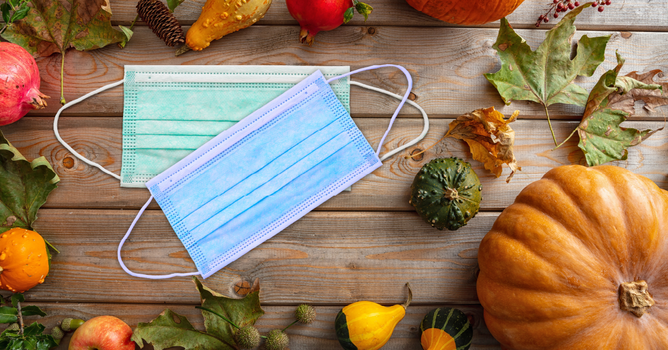Thanksgiving and COVID-19
Last month’s Thanksgiving came and went, as we finished off the eighth full month of quarantine. Unless you live in Kalawao County, Hawaii, it was probably a weird experience.
Thanksgiving is usually a time defined by reunion—reunion of family to family, friends to friends, tired college students to a week of sleep. We don’t think twice about who we’re seeing, whether it’s safe and what other people will think.
Though my extended family doesn’t live in the country, my family usually travels a couple hours to Charlotte or D.C. to spend the weekend with some friends. This year, we spent the Tuesday before Thanksgiving discussing, or perhaps debating, our best course of action.
Some family friends had invited us up to Washington, D.C. to spend the holiday. If we don’t go anywhere, Thanksgiving virtually passes without acknowledgement in my family, but with COVID-19 numbers rising so rapidly, I didn’t think it was safe to travel. I didn’t want to put anyone’s life at risk, and driving up to a well-populated city didn’t seem smart.
As my dad brought up, I was seeing my friends—granted, generally outdoors, and of course with masks on. I have been going to my chemistry lab every week. My sister is in Eagle Scouts and is on a robotics team. One of the four of us has to go to the Indian grocery store at least twice a month because we can’t get everything we need from Walmart. We have jobs, school systems and living conditions that allow us to work from home, and our family, like many others, tries hard to stay safe—but perhaps not our absolute hardest.
In the beginning we quarantined like most others. The state was on lockdown and we were eager to do what was safest. But time had dragged on, and the nation itched impatiently for normalcy, for the pandemic to fade like a fast fashion trend. Only it doesn’t work like that.
My dad made the argument that if we wanted to decide against traveling to D.C., we should be willing to go into lockdown again, to cut ourselves off from the rest of the world. I pointed out that just because we left the house a couple times a week didn’t make it okay to drive across the coast and mingle with multiple families.
We were stuck. There was me, not wanting to take the leap across states but unwilling to give up the little normalcy we had recently taken back. Then there was my dad, with his black-and-white worldview, wanting to see his friends but also completely okay with going back into full-fledged isolation if we made that decision.
Amidst all the debating, my mom brought nuance into the discussion—it all came down to what felt right. I think this point applies to a lot of Americans right now.
As we go to the mall for holiday shopping, to each other’s houses, to sports games and movie theaters, we may wear masks. We may use hand sanitizer and crack open the windows. Naturally, essential activities like work and school and grocery shopping fall into a separate category.
However, I would argue that often, we are taking these precautions for our internal reassurance rather than because we think we are doing the safest thing. The safest thing would be to order online, hang out outdoors or via FaceTime, and make social distancing and mask-wearing a priority.
I don’t mean to say that everyone has the ability to follow these guidelines every minute of every day. However, I think that the assurance that we are doing the right thing, both from ourselves and our peers, is the main motivator for many when it comes to staying safe.
This Thanksgiving, I ended up staying home. My dad went to see his friends, and since he came back we have worn masks around one another. He had fun with his friends and I had fun sleeping in and ordering out. I did what felt best for me—relaxation and peace of mind. He did what felt best for him, and it seems he had those same two things in mind.











